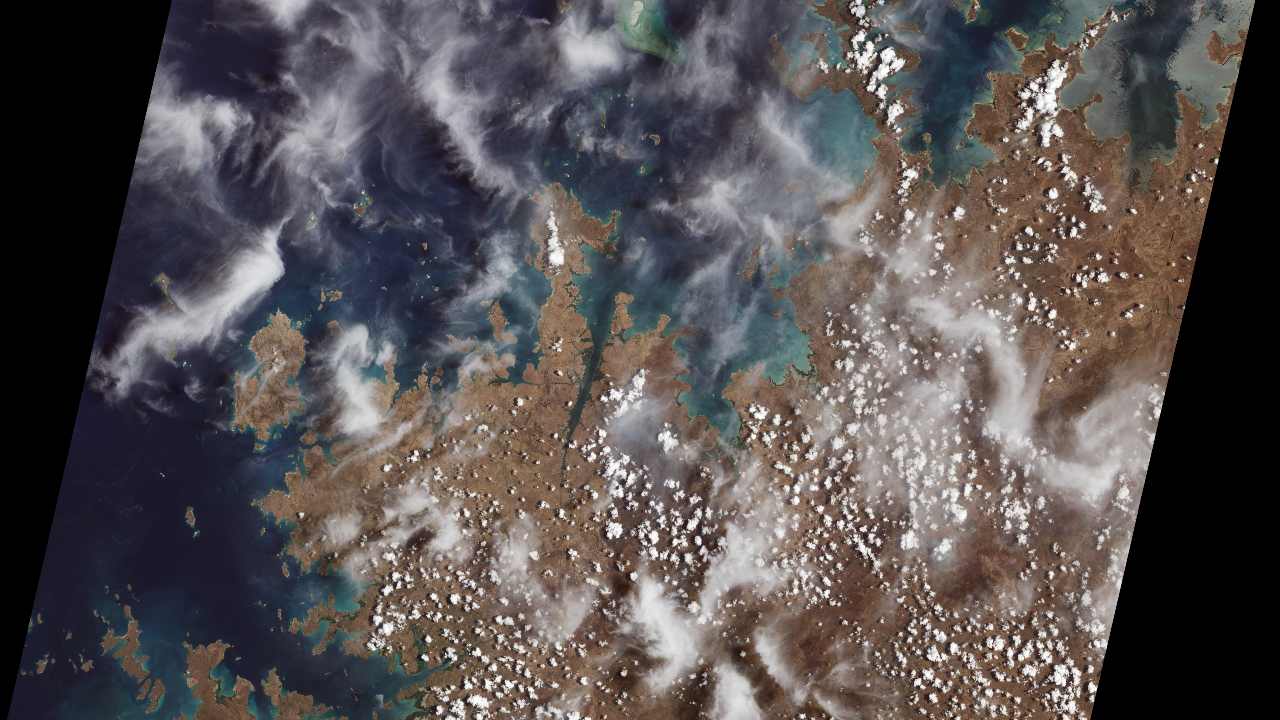NASA and USGS released the first photos of Earth captured by the Landsat 9 satellite- Technology News, Firstpost
FP TrendingNov 09, 2021 13:31:59 IST
The Landsat 9, which was launched on 27 September this year, has collected its first images of the planet Earth. The pictures released by the joint mission between the United States Geological Survey (USGS) and the National Aeronautics and Space Administration (NASA) have provided a preview of how Landsat 9 will help people understand the effects of climate change and manage vital resources.
The photographs released by Landsat 9 show glimpses from the Navajo Country in Arizona, the Florida panhandle, the city of Detroit with its surrounding area as well as the shorelines and coastal islands of North Australia and landscapes of the Himalayas. The data from these images will help in managing irrigation and monitoring the health of crops. The images, which were collected on 31 October, are available to the public.

Mangroves are prominent along the northwest coast of Australia. The first image collected by Landsat 9, on Oct. 31, 2021, shows mangroves clustered in protected inlets and bays on the edge of the Indian Ocean. Fluffy cumulus clouds and high-altitude cirrus clouds hover nearby. The aqua colors of the shallow near-shore waters give way to the deep, dark blues of the ocean. Image Credits: NASA
The Landsat 9 has two Earth-imaging instruments, with one instrument, the Operational Land Imager 2 (OLI-2), picking up visible, shortwave-infrared and near-infrared light in nine different wavelengths. The other instrument, known as Thermal Infrared Sensor 2 (TIRS-2), is focused on detecting thermal radiation, which allows researchers to keep a track of the surface temperature.
The satellite can also detect more subtle differences and transmit data with higher radiometric resolution to researchers. The Landsat can perceive differences between more than 16,000 shades of a given wavelength, according to NASA.
The Landsat 9 team of NASA is conducting a 100-day check-out period which includes calibrating the satellite’s instruments and testing its systems and subsystems before handing over the mission to the USGS in January next year.
The satellite, along with its predecessor Landsat 8, will collect approximately 1,500 images daily of the Earth’s surface, and cover the globe every eight days. The Landsat was launched in 2013 and remains in orbit to date.
Bill Nelson, NASA administrator, said that the Landsat 9 program has the power to “save lives”. He added that the agency will continue to work with the USGS to “strengthen and improve accessibility to Landsat data” both in America and globally to help people gain a better understanding of the effects of climate change and to manage our natural resources more effectively.
The Landsat programme has an unparalleled history of about 50 years in collecting data about the Earth from space. The first Landsat satellite was launched in the year 1972. With Landsat 6 being lost to a launch failure, the Landsat 9 is actually the eighth satellite in the program to reach orbit.
For all the latest Technology News Click Here
For the latest news and updates, follow us on Google News.

